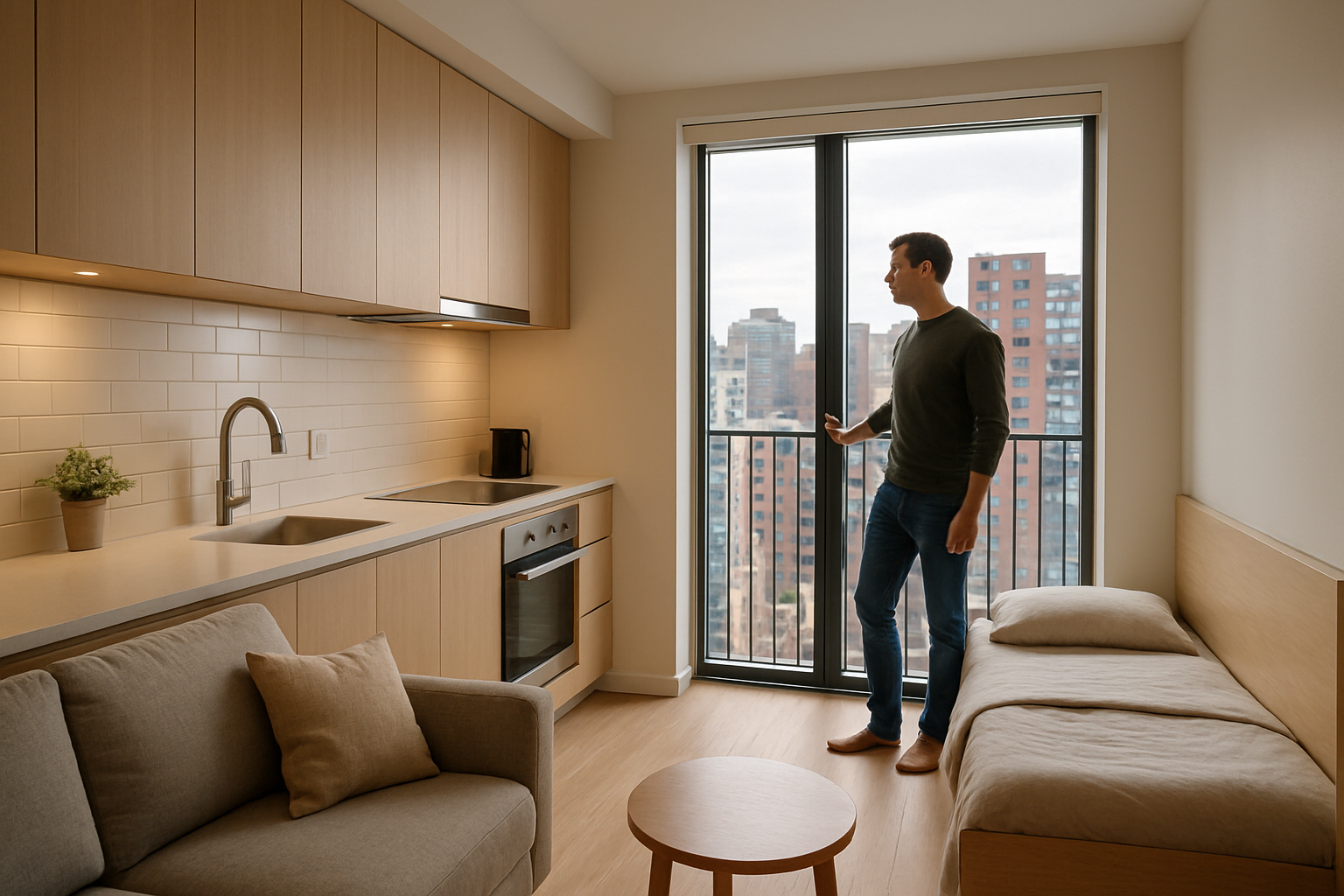Micro-Apartments: The Next Big Thing in Urban Real Estate
The urban housing landscape is undergoing a significant transformation, with micro-apartments emerging as a compelling solution to space constraints and affordability challenges. These compact living spaces, typically under 400 square feet, are reshaping city skylines and redefining the concept of home for many urban dwellers. As population density increases and housing costs soar, micro-apartments offer a unique blend of minimalism, functionality, and prime location that's captivating both young professionals and real estate investors alike.

In the early 2000s, cities like New York and San Francisco began experimenting with micro-unit developments to address housing shortages. These early adopters faced initial skepticism and regulatory hurdles but paved the way for wider acceptance. By 2010, micro-apartments had gained traction in cities across the globe, from London to Singapore, as a viable solution to urban housing crises.
The Economics of Small Spaces
Micro-apartments present a unique economic proposition for both renters and investors. For renters, these units offer an opportunity to live in desirable urban locations at a fraction of the cost of traditional apartments. The trade-off of space for location often results in significant savings on rent and utilities.
From an investor’s perspective, micro-apartments can yield higher returns per square foot compared to conventional units. The ability to fit more units into a single building increases the potential rental income, while the growing demand for affordable urban housing ensures a steady stream of tenants.
Design Innovations: Making the Most of Every Inch
The success of micro-apartments hinges on innovative design solutions that maximize livability in minimal square footage. Architects and designers are pushing boundaries with multi-functional furniture, clever storage solutions, and flexible layouts.
Foldable beds that transform into desks or dining tables, hidden storage compartments, and movable walls are just a few examples of the ingenuity at play. Some developments are also incorporating shared amenities like communal kitchens, lounges, and workspaces to complement the compact private units, fostering a sense of community among residents.
Regulatory Challenges and Urban Planning Implications
The proliferation of micro-apartments has not been without controversy. Many cities have had to revisit their zoning laws and building codes to accommodate these non-traditional living spaces. Minimum square footage requirements, occupancy limits, and parking regulations are among the issues that have required reassessment.
Urban planners are grappling with the long-term implications of micro-living on city infrastructure and social dynamics. While these units can increase housing density and potentially revitalize neighborhoods, concerns about overcrowding and the impact on local services persist.
The Future of Micro-Apartments: Beyond the Hype
As the micro-apartment trend continues to evolve, several factors will shape its future trajectory. Technological advancements in home automation and space-saving solutions will likely enhance the appeal and functionality of these units. Additionally, the ongoing shift towards remote work may influence the design and amenities offered in micro-apartment developments.
The COVID-19 pandemic has raised questions about the viability of ultra-compact living in a world where personal space has taken on new importance. However, it has also highlighted the need for affordable housing options in urban areas, potentially accelerating the adoption of micro-apartments with modified designs that prioritize health and well-being.
Market Outlook and Investment Potential
The micro-apartment market is poised for continued growth, particularly in high-density urban areas with strong job markets and limited housing supply. Cities like Seattle, Boston, and Washington D.C. are seeing increased development activity in this sector, with both established real estate firms and innovative startups entering the market.
Investors considering micro-apartments should conduct thorough market research, as success can vary significantly based on location, target demographic, and local regulations. While the potential for high yields is attractive, it’s crucial to consider factors such as long-term tenant satisfaction, maintenance costs, and potential regulatory changes that could impact profitability.
A Small Solution to Big Urban Challenges
Micro-apartments represent more than just a housing trend; they’re a response to the evolving needs of urban populations and the realities of city living in the 21st century. As cities continue to grow and housing affordability remains a pressing issue, these compact living spaces offer a creative solution that balances cost, location, and functionality.
For real estate professionals, developers, and investors, micro-apartments present both opportunities and challenges. Success in this niche market requires a deep understanding of urban demographics, innovative design principles, and the regulatory landscape. As the concept matures and adapts to changing societal needs, micro-apartments are likely to play an increasingly significant role in shaping the future of urban housing markets worldwide.





